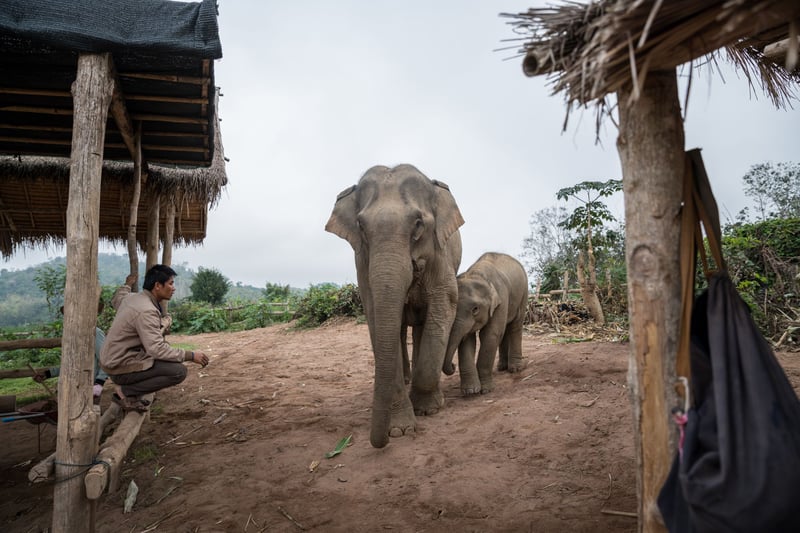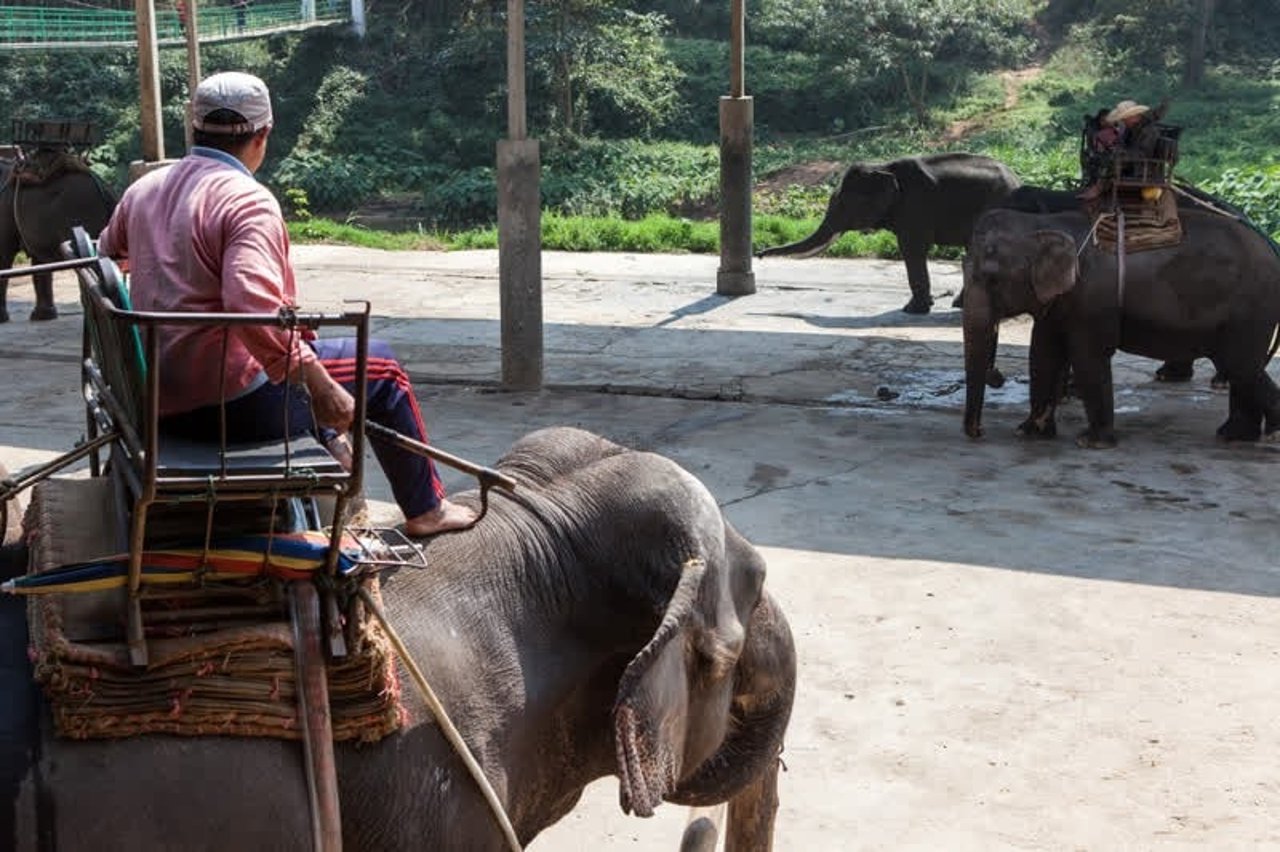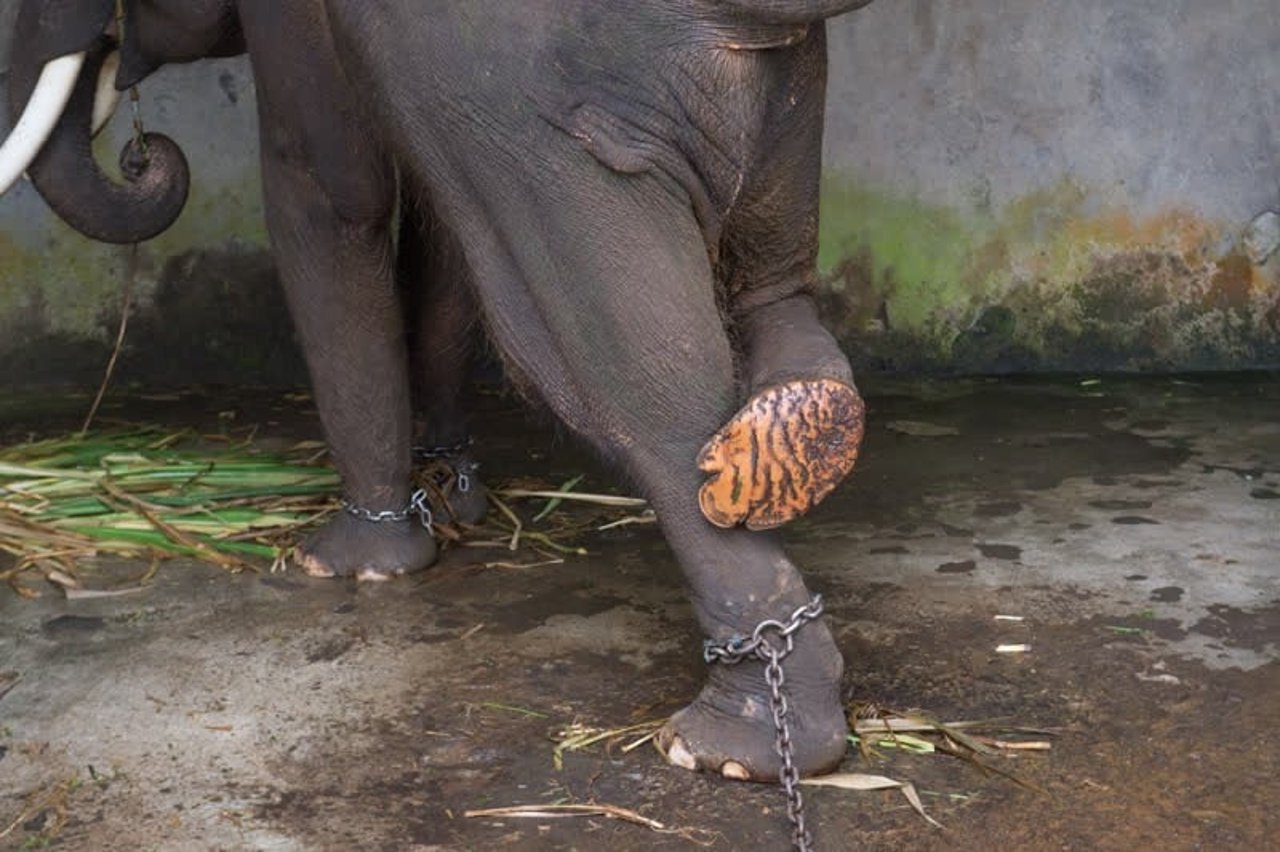
Be a star in reality.
It was heartbreaking to see Kim Kardashian West pose with an elephant at a facility in Bali and post it to her 136 million Instagram followers last week.
This is not the first time Ms. Kardashian West has posed with an elephant and the backlash she received is not unwarranted.
According to reports, Kim and Kanye visited Mason Adventures Bali, where tourists can ride, bathe, and take selfies with the animals, or watch elephant shows. These interactions not only put incredible stress on the elephants, but they require cruel training methods to make the animals perform.
World Animal Protection’s Wildlife Abusement Parks report found Bali to be one of the worst places for wild animal tourism. In fact, 100 percent of the venues visited with captive elephants, tigers, dolphins, or civet cats, and 80 percent of those with captive wild primates did not meet even the basic needs of captive wild animals.
In order to make elephants submit to elephant rides and other human interactions, they are taken from their mothers when babies and are forced through a horrific training process known as “the crush,” which involves physical restraints, inflicting severe pain, and withholding food and water.
By the time tourists come to ride elephants, they may look at peace, but this is because their spirits have been broken. Bullhooks or goads, sharp training instruments used during “the crush,” remind the elephants of human dominance.
And when they’re not performing? Elephants at tourist attractions like the one Kim K visited are typically chained day and night, frequently kept on concrete floors and in stressful locations near loud music, roads, or noisy visitor groups. Many times, these chains are less than 10 feet long. Often, elephants are kept from having any social interactions with each other, which is hugely damaging to the psychological well-being of this herd animal.
Most tourists sign up for experiences with elephants because they love wild animals and don’t know about the cruelty behind the rides, tricks, and photo opportunities. If people knew the facts, then they wouldn’t participate in cruel elephant activities.
While some elephant venues claim to have rescued the animals in their care, that doesn’t always mean the elephants receive the attention they need.
Here’s how you can make sure the venues you’re visiting are legitimate sanctuaries.
Ask yourself these questions to avoid cruel attractions:
- Are the wild animals kept in cages that don’t meet the Five Freedoms of Animal Welfare?
- Are wild animals forced to perform tricks in shows?
- Are you able to ride, touch, hold, walk, or swim with wild animals?
- Does the tourist attraction sell parts or products from wild animals?
Does the tour company chase or lure wild animals closer with food or bring people close to wild animals so they can see them better?
If you’ve answered yes to any of these, it is a cruel attraction.
Remember: if you can ride, hug, or take a selfie with an animal, there is likely cruelty involved.
Going on a trip? Download our Sanctuary Checklist before booking any attractions with an animal and sign our wildlife-friendly pledge today.


